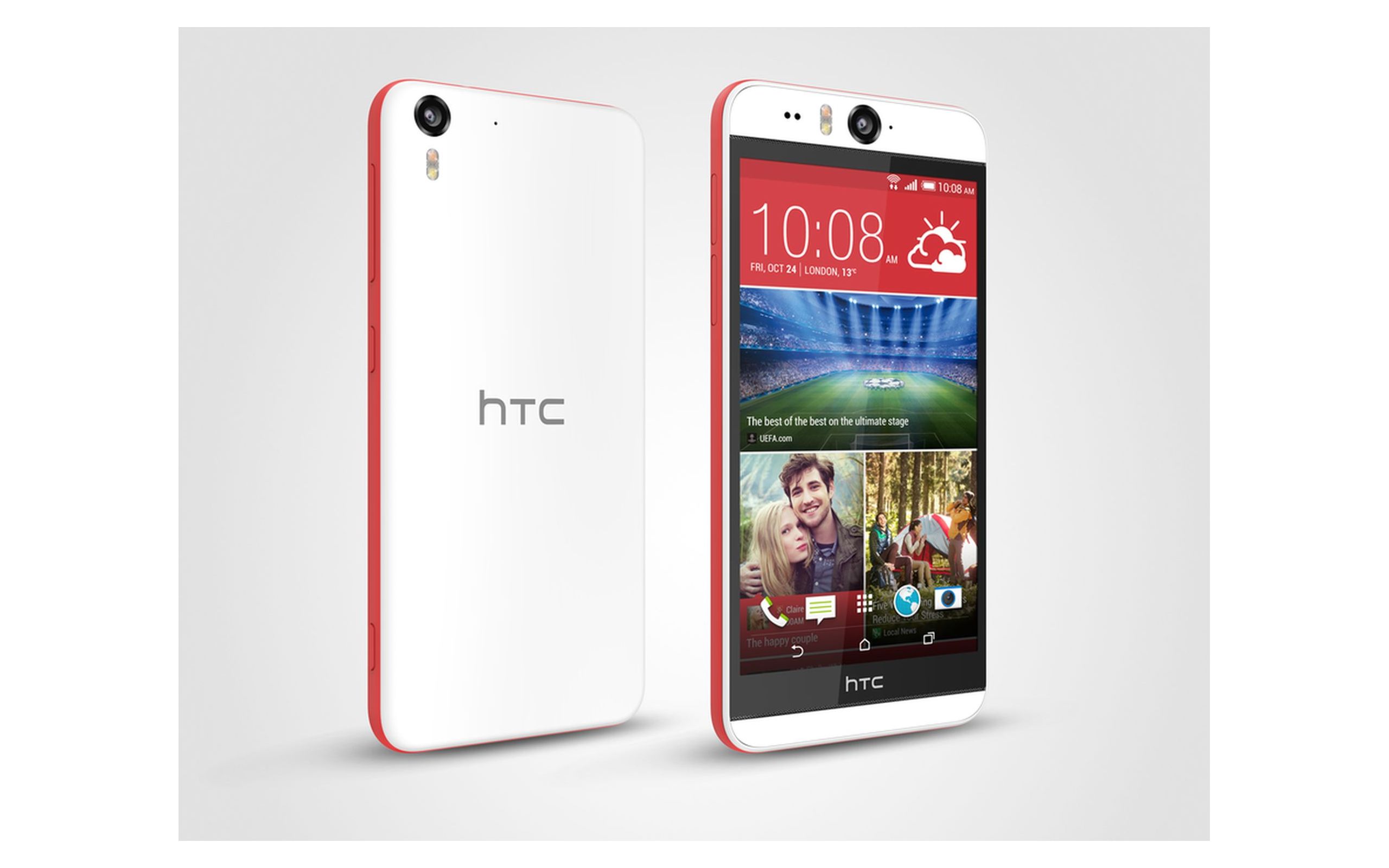
New York – Smartphone maker HTC put the focus on imaging with the launch of a flagship phone in its value-oriented Desire line and its first viewfinder-less point-and-shoot camera, a 16-megapixel model shaped like a periscope and targeted to active consumers and families.
The launch is part of a new HTC direction to become a personal technology brand that offers connected devices, including planned smart watches, and software and services, which include the new Zoe cloud-service app that lets Android smartphone users stitch together videos and pictures to create a Zoe “highlight” reel with content captured by their own phones and friends’ phones. A Zoe app for Apple devices is in the works.
The 4G LTE Desire Eye phone with 5.2-inch 1080p display will be launched exclusively through AT&T with such imaging features as 13-megapixel cameras on both the front and rear, dual-LED flashes and1080p video capture on both cameras, exceeding the resolution of the camera in the HTC One M8. Both cameras also feature BSI and HDR, and the front selfie camera boasts wide-angle f/2 22mm lens while the rear camera features f/2.0 28mm lens. A dedicated camera button focuses and shoots.
The phone also features a suite of new camera/video features that will be rolled out to HTC One series phones and to the Desire 612 and 816 in the coming months.
AT&T hasn’t disclosed the phone’s pricing or availability, but the phone is expected to retail without contract between $199 and the HTC One M8’s current price of $599 to $669 at various carriers.
Nigel Newby-House, executive director of North American product strategy and planning, pointed out that the smartphone growth area in the U.S. has been in “value devices” and that the Desire phones, sold by multiple U.S. carriers and no-contract brands, brings a “great software experience” to more affordable price points.
Eye imaging: In the Desire Eye, the software experience includes HTC Eye Experience mobile-imaging software, which offers multiple new ways to improve front-camera selfies. With the selfie camera, for example, users will be able to auto-capture an image simply by holding still, smiling, or giving a voice command (“cheese” for photos and “action” for video).
Skin-smoothing software is also available for selfies as well as split capture, which lets users create a split-screen image of themselves and an image taken from the rear camera either simultaneously or later. A crop-me-in feature lets users burn their selfie portrait into another image. And a selfie photo-booth-like feature lets users place a series of selfies into a grid or filmstrip.
A face-tracking feature for video chats keeps a user in the center of the lens at all times. Up to four people in a room can be face-tracked simultaneously for simultaneous display.
The feature is promoted as bringing desktop functionality to phone-based video chats for the first time.
The phone carries over the Desire 820’s face-fusion function, which lets users merge their face with the body of a friend or celebrity, and a love makeup function, which previews a selected level of skin smoothing before an image is captured.
The Eye’s Zoe feature has been tweaked to let users create highlight reels of multiple lengths, not just 30-second lengths.
In another Zoe change, Zoe will be upgraded to create collaborative highlight reels from content taken by multiple phones. Via an HTC cloud service, users will be able to upload a reel, and others will be able to download it, remix it with their content, and upload the mix to share with others.
In another shift for the company, HTC will make the Zoe collaborative app available in the Google Play store to users of other HTC and non-HTC Android phones in the coming days.
An iOS app is planned sometime later.
Eye features: The phone also boasts many performance features available with the HTC One series flagship M8 but not on other Desire phones. They include 2.3GHz quad-core processor, 2GB RAM, and zero-gap unibody design, though the Eye’s chassis is all plastic whereas the M8’s chassis is metal.
It also comes with IPX7 waterproof rating, allowing for immersion in up to 1 meter of water for 30 minutes.
Other features include embedded 2400mAh battery delivering 20 hours of 3G talk time, dual front speakers, three mics for enhanced noise cancellation, 16GB memory, 128GB microSD Card slot, Bluetooth 4.0 with aptX, and Wi-Fi 802.11 a/b/g/n with dual-band n.
RE camera: In its first venture into personal technology other than phones and tablets, HTC unveiled the $199-suggested RE viewfinder-less camera. The hand-held periscope-shaped camera will initially be available at HTC.com and Best Buy, though a specific date wasn’t revealed. Distribution will grow later to AT&T, T-Mobile, Verizon and Amazon.
The 16-megapixel camera with 1080p/30fps video capture is positioned as an active family camera that make photo and video capture more enjoyable because users don’t have to hold a phone in front of their face. The IPX7-rated f/2.8 camera can be held, placed on a table, or placed in s shirt pocket, and its 146-degree field of view is certain to capture everyone in a room, said Newby-House. A normal field of view can also be selected.
The camera uses capacitive technology to automatically turn on when gripped so users can grab the camera quickly and then press a large button for quick picture taking or video capture.
It can be placed in vests or short pockets for use by hikers and bicyclists, he added.
The RE app for Android phones, and later for iOS devices, displays what the camera sees so users can set up a shot or view the video action. The app also lets users play back the images and videos stored on the camera, and it backs content automatically to the phone via Wi-Fi Direct or to Google Drive via a Wi-Fi network. Real-time video streaming to YouTube is also in the works.
Key features include a slow-motion mode, which captures 720p video at 80fps and allows for 4x slow-motion playback at 20fps.
A time-lapse photography feature captures an image every five seconds for eight hours, and the images can be stitched together into a video.
Other features include included 8GB MicroSD card, 128GB card slot, and 810mAh battery that allows for an hour and 40 minutes of continuous 1080p video capture.
It can be used with an ISO-standard tripod.













